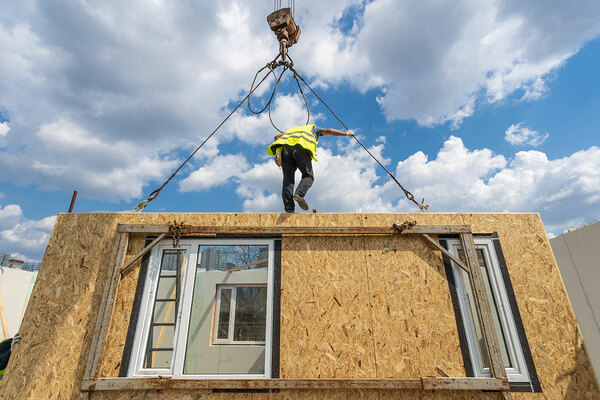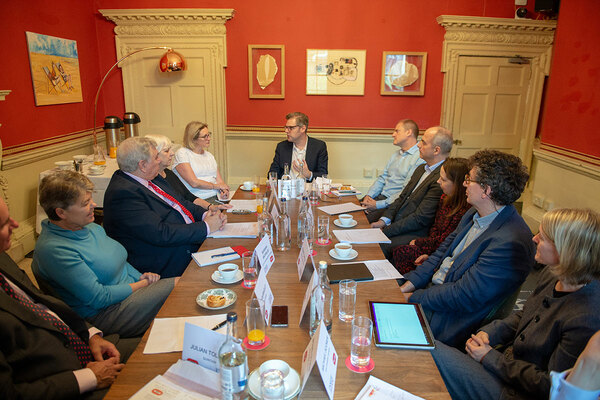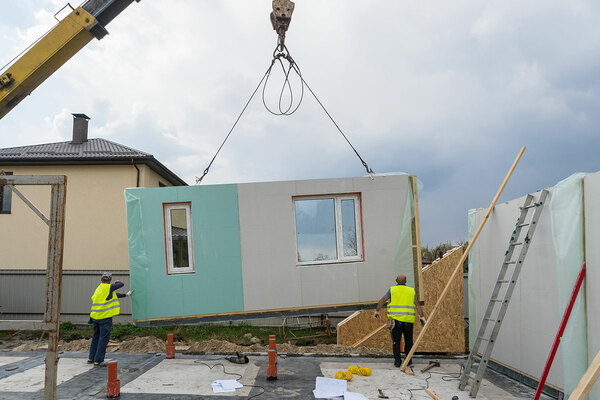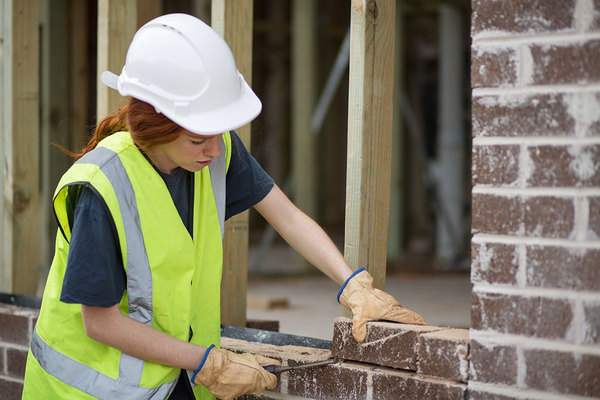How can developers reach carbon-neutral goals?
This is the question that Chris Stevens, managing director of Bouygues UK, wants the construction industry to ask itself, to ensure the housing being built now is fit for the future. Picture by Getty
In association with:

Since the lifting of the Housing Revenue Account (HRA) funding cap last year, more councils have decided to build new stock, some for the first time in decades. What factors does a council development director need to consider at the start of a project?
Many local authorities are restructuring their teams to cope with the demands of development, but anyone who has tried it before will know that getting an effective development team up and running is a long process. Working with suitable partners who can fulfil some of the roles required in the short and possibly the long term is essential, both for efficiency of overheads and breadth of skills.
Even once the schemes are established, any director should put cultivating effective working partnerships high on their list to ensure quality houses are provided at an acceptable cost. This depends on the local authority having the level of leadership and the culture required to foster those relationships, which ultimately leads to a better product.
How have you seen the industry change in recent years?
It is easy to think that it has been very slow to change, but when I started to work in the industry 32 years ago, it was far less diverse – for example, health and safety was not regulated so vigorously and buildings were built from scratch on site. Today, the industry is moving towards higher safety and efficiency with offsite manufacture and modern methods of construction (MMC). There is now active debate within and outside the industry about putting quality on the same footing as health and safety and the skills that we need in our workforce to do that.
This industry has always been filled with incredibly talented people who can offer inventive solutions to complex challenges. That talent is now introducing new technologies that offer higher efficiency, higher quality and – in turn – higher margin. It is that equation that will place the industry in a new light, attracting even more diverse talent.
How do you think social housing providers, architects and developers can work together to achieve quality homes in high volume?
I think the most important issues are determining what ‘good’ is, spending time together at the start of a project to agree this, to understand the roles in the working relationship. ‘Quality homes’ is a badge used regularly, but it is unclear whether we mean excellent architecture, affordable cost, low or acceptable whole-life costings, or perhaps the wider vision of the development. There are award-winning developments recognised in terms of excellent architecture, but will time see them as winners in terms of affordable construction, whole-life costings and general positive outcomes? Do people enjoy living there? Every scheme should be considered in its entirety, looking at the overall quality.
How can the construction industry ensure great quality builds?
In my view, the industry has to accept that it is no longer purely about construction. It is the provider of a service to a client that may no longer be the person that pays you – our stakeholders are wider and more diverse. The notion of providing a service over a longer period requires the design to be arrived at through partnership, the involvement of the community and the rediscovery of skills that perhaps the industry has lost over the years.
It is vital that the industry becomes more collaborative and diverse, attracting different skills and backgrounds.
To ensure quality, builders need to work with trusted design partners throughout the job. Constructors need to demand precision, so that building elements such as cladding and roofing are well made and fit together, whether they are produced on site or offsite.
There must also be a strategy and discipline for zero defects throughout – from design, through skills and delivery, to materials, supply chain and handover process.
The industry could focus on reducing operating costs by working on collaboration with providers of facilities management and future-proofing buildings, making sure they are maintainable, adaptable and easier to repurpose.
Finally, we need a pipeline of work that enables us to escape the bespoke nature of most house construction and enables us to deliver high-quality homes in higher volumes, potentially leading to more multi-project relationships and fewer single-project relationships.
What elements do you think social housing providers and developers could be considering to get closer to carbon-neutral goals?
The achievement of these goals will depend on the effective reduction of embedded carbon, which can be achieved using efficient, well co-ordinated and buildable design, buildings that are simple to maintain, suitable material selections, and high levels of waste management.
I would add that continual improvement, through partnerships and long-term relationships, enables us to adjust our solutions to enhance our results.
Using MMC, offsite and modular designs certainly speed up learning through repetition. All this would need to be offset by the positive innovation of on-site production of electricity and heat using solar farms, innovative buildings and smart technologies, for example.
It requires the input of all users for a building to be carbon neutral, as you need to take into account the carbon embodied in design and construction, as well as the operational carbon generated from the energy the building uses (heating, lighting etc) along with a considered energy management system, which will reduce the overall carbon footprint of the development.
The choice of materials is also a factor, not just during construction but also deconstruction.
Every development should aspire to achieve a position where it becomes autonomous in its energy requirements and seeks not to draw down energy from the grid. However, we are some way off this ambition.
A positive approach could assist the development in being considered as a carbon-offset project, should it achieve carbon-positive status.
What sort of builds would you like to see in the next 30 years?
I would simply like to see efficient, high-quality builds and places being achieved as the norm rather than the exception. I would like to see an industry proud to say it delivers a service that meets the needs of the people who live in our buildings in the long-term – an industry that delivers quality at its most fundamental level, builds what it intends in the way it intends to build it, on time, on budget and never having to go back to build it again. I would like to see the industry working together to upskill and diversify the workforce and in doing so, change the behaviours that have existed in this industry for far too long.














